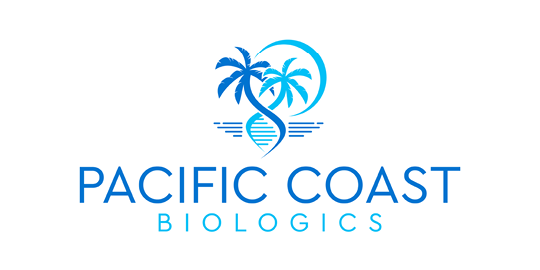Recombinant Human Heregulin beta-1
Recombinant Human Heregulin beta-1
Artikelnummer
PACPC-H-HEREG-B-250
Verpackungseinheit
250 µg
Hersteller
Pacific Coast Biologics
Verfügbarkeit:
wird geladen...
Preis wird geladen...
Description: Neuregulin/Heregulin represents a group of closely related polypeptide growth factors generated from alternate gene splicing (NRG1, NRG2, NRG3, and NRG4). Currently, there are more than 14 soluble and membrane-bound proteins derived from the NRG1 gene. The extracellular segment of transmembrane NRG1 isoforms undergoes proteolytic cleavage, producing soluble growth factors. Notably, HRG1-β1 comprises an Immunoglobulin (Ig) domain alongside an Epidermal Growth Factor (EGF)-like domain, the latter is crucial for binding directly to the receptor tyrosine kinases erb3 and erb4. This binding event initiates erb3 and erb4 heterodimerization with erb2, thereby activating intrinsic kinase activity and leading to tyrosine phosphorylation. While the precise biological impacts of HRG1-β1 remain unclear, studies have shown its role in enhancing the movement and invasive properties of breast cancer cells, potentially involving the upregulation of autocrine motility-promoting factor (AMF) expression and functionality. Recombinant Human Heregulinβ-1 (HRG1-B1) is a 7.5 kDa polypeptide composed solely of the EGF domain from heregulinβ-1, spanning 65 amino acid residues.
Expression System: E. coli
Molecular Weight: 7.5 kDa
Class: Recombinant
Endotoxin Concentration: <1 EU/µg
Activity: The ED50 was determined by the dose-dependent stimulation of the proliferation of human MCF-7 cells is ≤ 0.5 ng/ml, corresponding to a specific activity of ≥ 2 x 10^6 units/mg.
Form: Lyophilized
Contains: no preservative
Storage Conditions: -20°C
Purity: ≥ 98% by SDS-PAGE gel and HPLC analyses
Caution: For Research Use Only. Not for use in diagnostic procedures.
Gene Symbol: NRG1
Protein ID: Q02297
Expression System: E. coli
Molecular Weight: 7.5 kDa
Class: Recombinant
Endotoxin Concentration: <1 EU/µg
Activity: The ED50 was determined by the dose-dependent stimulation of the proliferation of human MCF-7 cells is ≤ 0.5 ng/ml, corresponding to a specific activity of ≥ 2 x 10^6 units/mg.
Form: Lyophilized
Contains: no preservative
Storage Conditions: -20°C
Purity: ≥ 98% by SDS-PAGE gel and HPLC analyses
Caution: For Research Use Only. Not for use in diagnostic procedures.
Gene Symbol: NRG1
Protein ID: Q02297
| Artikelnummer | PACPC-H-HEREG-B-250 |
|---|---|
| Hersteller | Pacific Coast Biologics |
| Hersteller Artikelnummer | PC-H-HEREG-B-250UG |
| Verpackungseinheit | 250 µg |
| Mengeneinheit | STK |
| Human Gene ID | 3084 |
| Wirt | Human |
| Konjugat | Unconjugated |
| Produktinformation (PDF) |
|
| MSDS (PDF) |
|

 English
English










